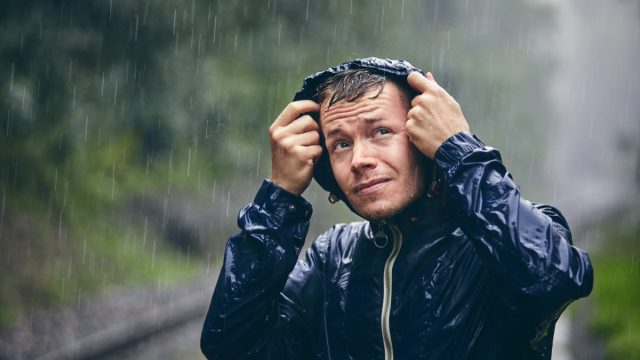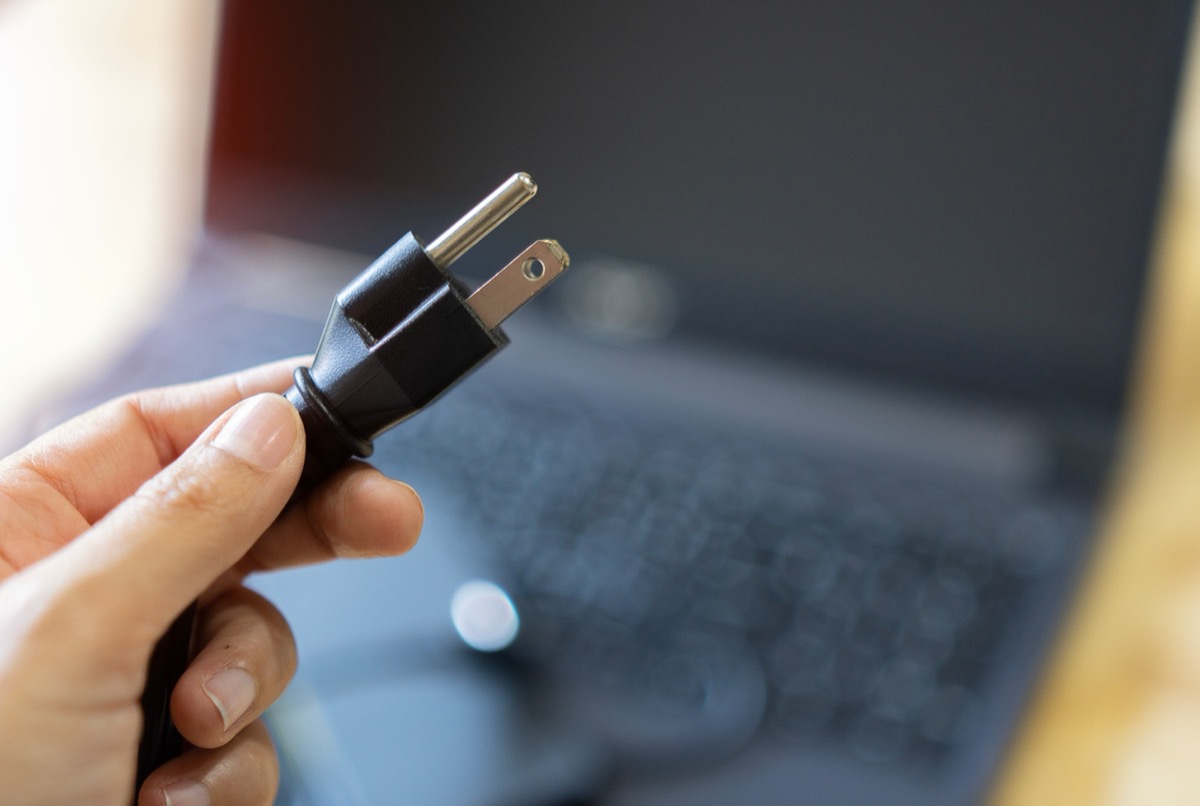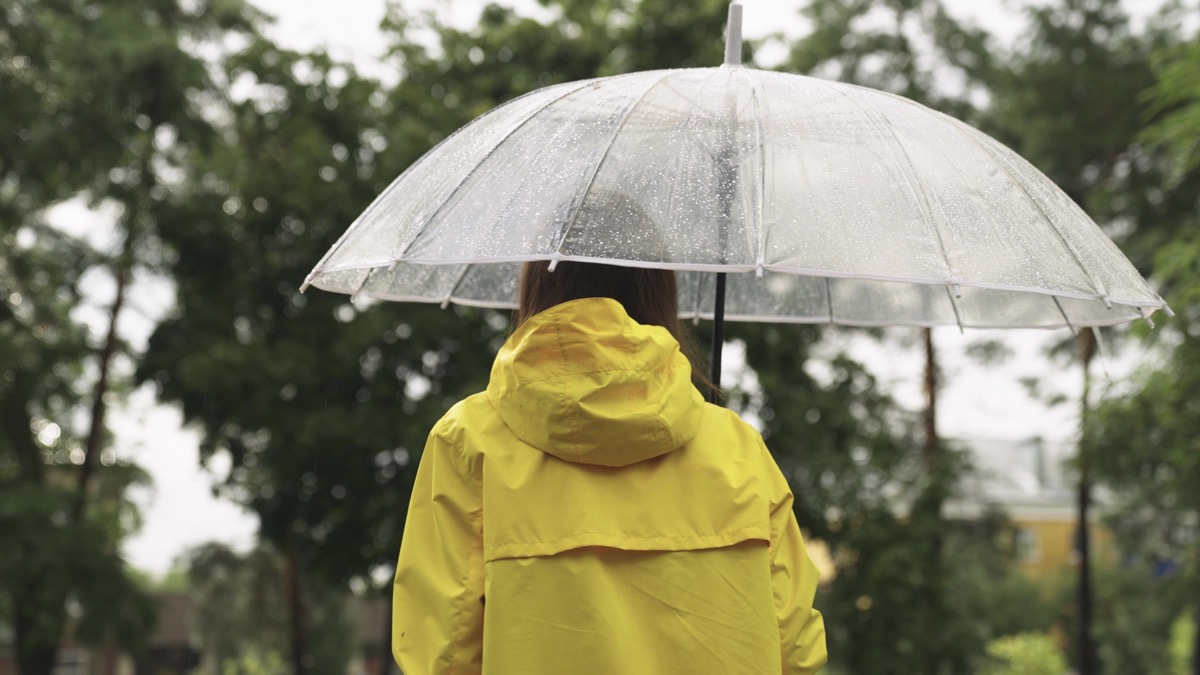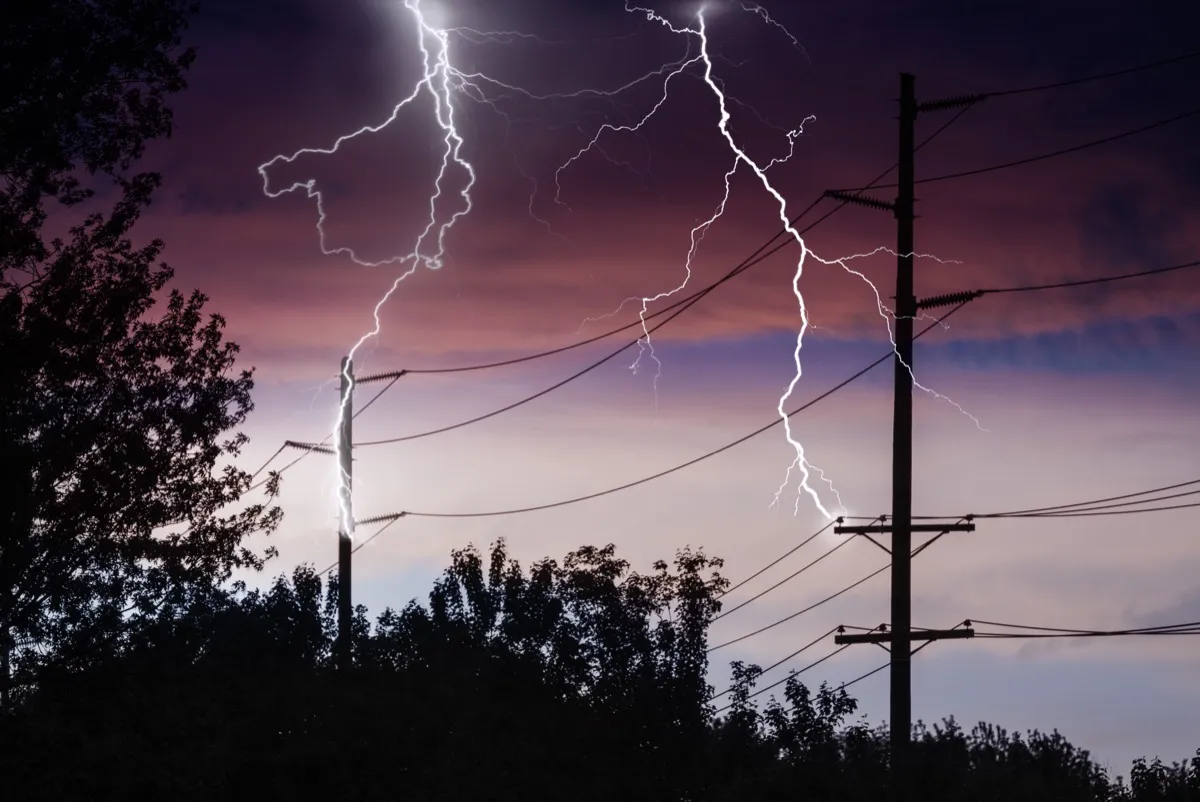9 Dangerous Things You Should Never Do During a Thunderstorm
Emergency preparedness experts share their top tips for staying safe.

A demonstration of nature's raw power, thunderstorms can be a sight to behold. However, they're also a serious hazard, resulting in hundreds of injuries and scores of death every year. Thankfully, if you know what to never do during a thunderstorm, you can stay safe.
Thunderstorms are most common during the summer months, thanks to high levels of humidity. In fact, 73 percent of lightning deaths occur in June, July, and August, according to the Centers for Disease Control and Prevention (CDC). That's because there are three key conditions needed to create a thunderstorm, explains the National Weather Service: Excessive moisture in the air, atmospheric instability, and a trigger that gets the atmosphere moving. Taken together, they can be the catalyst for heavy rain, thunder, lightning, high winds, and even hail.
But there are several ways you can prepare for severe thunderstorms this summer, says the American Red Cross. For instance, signing up for emergency alerts from your local government, installing backup batteries in your home, and making a family plan for dangerous weather conditions can all help you in an emergency.
However, there are also quite a few dangerous things you should completely avoid doing during a thunderstorm to maintain safety as you ride out risky weather. Read on to learn the nine things you shouldn't do, according to emergency preparedness experts.
RELATED: 5 Things You Should Never Do When You Have Central Air.
1
Go near water of any kind.

You're likely already aware that water conducts electricity, and that swimming outdoors during a thunderstorm is a dangerous proposition. But far fewer people realize that the water sources in their homes can also pose a risk to their safety.
According to the CDC, you should never take a shower or bath, do your dishes, or have any other contact with water in your home during a storm.
"Lightning can travel through a building's plumbing. The risk of lightning traveling through plumbing might be less with plastic pipes than with metal pipes. However, it is best to avoid any contact with plumbing and running water during a lightning storm to reduce your risk of being struck," the health authority writes.
2
Use electronics.

Plugged-in electronics are another source of danger during a thunderstorm. That's why you should never touch anything connected to an electrical outlet, including computers, landline phones, televisions, game systems, washers, dryers, stoves, or other appliances.
In fact, an electricity surge can damage your electronics even if your device is turned off, notes Zenia Platten, a representative for Total Prepare Inc., a Canadian emergency preparedness company.
"To mitigate this danger, it is crucial to unplug all non-essential electrical devices, turn off power strips and surge protectors, and wait until the thunderstorm has passed before using them again," suggests Gavin Dawson, PA-C, WEMT, a board-certified physician assistant, professional wilderness emergency medical technician, and the founder of Global Emergency Medics.
RELATED: 5 Mistakes You're Making That Keep Your House Hot, Experts Say.
3
Go near your fireplace.

Fireplaces are another unexpected source of danger in the home during a thunderstorm.
"Many fireplace inserts are made of metal and can conduct electricity all the way down the chimney pipe and into the home," Platten says. "If the storm is windy, you should avoid using the fireplace to keep smoke from blowing backwards and filling the room with fumes and smoke."
4
Stay outside.

As the saying goes, "When thunder roars, go indoors." It's important to immediately seek shelter in a secure building if you know a thunderstorm is on its way.
It's especially crucial not to stand in elevated or open spaces where your body is the highest point, experts say.
"Lightning is attracted to high points, and if you are in a field, empty parking lot, or other wide open space, it may use you as a path to the ground," explains Platten.
Once indoors, stay away from windows, doors, patios, and garages with concrete floors, since concrete can conduct electricity.
RELATED: 23 Poisonous Plants Hiding in Your Backyard.
5
Lie down on the ground.

If you find yourself outdoors during a thunderstorm with no access to a safe shelter, the CDC suggests crouching down into a "ball-like position with your head tucked and hands over your ears." By keeping your body low, you are less likely to be struck by lightning, they explain.
However, experts say that this recommendation can sometimes lead to some dangerous confusion.
"'The lower you are, the safer you are,' is a common safety notion during thunderstorms. While this is meant to encourage individuals to find low-land shelters, it becomes dangerous when it's interpreted as 'safety equals lying flat on the ground or floor,'" explains Dawson.
"With the wet ground or floor serving as a conductor, lethal currents of lightning-induced electricity can travel horizontally within a 20-feet proximity range," he explains.
6
Go near trees.

While wide open spaces may make you a more likely target for lightning, tree-covered areas pose their own kind of threat.
"Trees fall or drop limbs in a storm, which can cause major damage if they land on someone," warns Platten. "In fact, sheltering under trees and being struck is the second leading cause of death in a lightning storm.
However, Dawson notes that when there are no other options for cover, your best bet is to take shelter under the shortest tree you can find since it is the least likely to be struck by lightning.
"Avoid standing on a root, which can conduct electricity, and instead stand on dirt or rock. Keep shoes on, if possible, and crouch low. This reduces you to a smaller, rounder target," he tells Best Life.
RELATED: 4 Drinks to Avoid During a Heat Wave, Experts Warn.
7
Go near telephone poles or power lines.

Similar to trees, telephone poles and power lines are two more common high points that can attract lightning.
"You don't want to be close when that happens!" Platen says. "Downed power lines can create a dangerous area around them, so it's best to stay away entirely."
8
Forget to bring loose items inside.

Before a thunderstorm begins, it's important to secure any loose items in your yard, such as patio umbrellas or recycling bins.
"Thunderstorms often come with high winds, and loose outdoor objects can be blown about," explains Platten. "This may damage your items or property, cause litter (in the case of recycling bins and garbage bins that were full), or even strike pedestrians or passing cars."
For more safety tips sent directly to your inbox, sign up for our daily newsletter.
9
Let pets off leash.

If a storm unexpectedly rolls in while you're out with your dog, it's important to keep them leashed and head straight for the indoors.
"Pets can be spooked by loud thunderclaps and may act unexpectedly," says Platten. "Even well-trained animals should be kept on leash when outdoors to prevent them from running for cover."





















